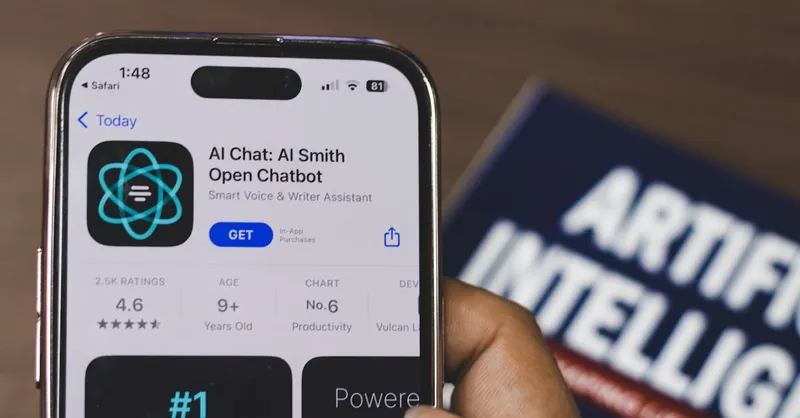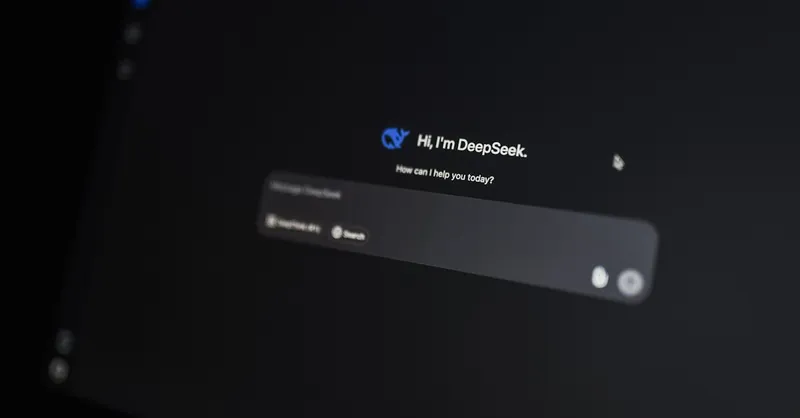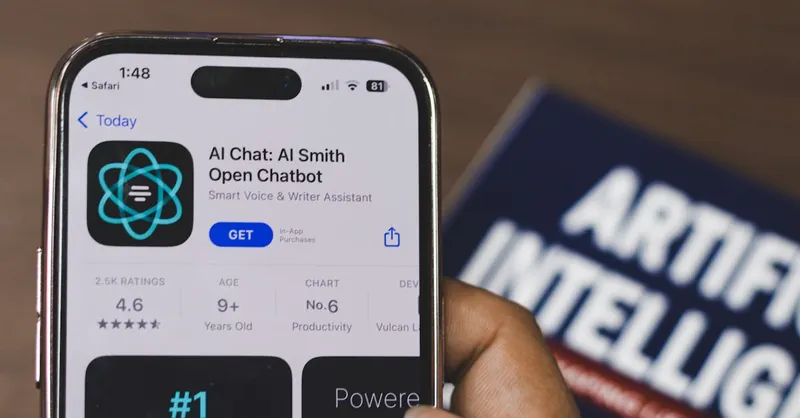Boost Productivity with Chatbots: AI-Powered Automation Tips
Category: Productivity & Automation
Unlocking Productivity: How Chatbots Revolutionize Your Workflow
If you're a professional, entrepreneur, or tech enthusiast, you know that boosting productivity is paramount — especially when juggling multiple tasks and responsibilities daily. You've likely explored various AI and automation tools, but chatbots stand out as uniquely capable in streamlining interactions and automating routine workflows. You landed here because you want actionable insights on how to leverage chatbots to transform your productivity, reduce operational friction, and free up time for high-impact tasks. Unlike general articles that touch lightly on chatbot uses, this post dives deep into practical, real-world strategies tailored to your advanced understanding of technology and automation. We'll explore key chatbot applications across customer service, internal operations, and marketing, backed by best practices and emerging tech trends. Whether you're considering integrating chatbots into your startup or enhancing existing automation frameworks, this guide is crafted to meet you where you are — providing the clarity and confidence you need to implement chatbot solutions effectively. Read on to discover how chatbots can become your productivity ally, cutting costs and elevating your workflow like never before.
- Unlocking Productivity: How Chatbots Revolutionize Your Workflow
- Understanding Chatbots: Types, Technologies, and Capabilities
- Key Productivity Challenges Chatbots Address
- Boosting Customer Service Efficiency with Chatbots
- Automating Internal Operations Using Chatbots
- Integrating Chatbots with Existing Tools and Platforms
- Advanced Use Cases: Chatbots in Sales and Marketing Automation
- Measuring Chatbot Impact on Productivity
- Best Practices for Designing User-Friendly Chatbots
- Future Trends in Chatbot Technology and Automation
Understanding Chatbots: Types, Technologies, and Capabilities
To fully harness the power of chatbots for productivity, it's essential to understand their different types, the technologies driving them, and their unique functional capabilities. Chatbots broadly fall into three main categories, each varying in complexity and suited to different use cases:
-
Rule-Based Chatbots: The simplest form, these operate on pre-defined scripts or decision trees. They respond to specific commands or keywords, making them ideal for straightforward workflows like FAQs or appointment scheduling. While limited in flexibility, their predictability ensures reliable performance in controlled environments.
-
AI-Driven Chatbots: Leveraging machine learning (ML), these bots can understand patterns and improve over time. Unlike rule-based models, AI-driven chatbots can manage more complex interactions, adapt to user behavior, and provide personalized responses. This adaptability boosts efficiency in customer support and sales processes.
-
NLP-Powered Chatbots: At the forefront of chatbot technology, those with Natural Language Processing (NLP) capabilities can comprehend and generate human language in a conversational manner. NLP enables chatbots to understand context, sentiment, and nuances, facilitating sophisticated interactions such as problem-solving, recommendations, and multi-turn conversations.
Underlying Technologies Behind Chatbots
The effectiveness of chatbots stems from a blend of advanced technologies, including:
- Natural Language Understanding (NLU): Parses user input to identify intent and extract meaningful data.
- Machine Learning Algorithms: Support pattern recognition and behavior prediction to refine chatbot responses.
- Dialog Management Systems: Orchestrate conversation flow, enabling dynamic and context-aware exchanges.
- Integration APIs: Connect chatbots with CRM systems, databases, and external services to automate complex tasks.
Functional Differences and Impact on Productivity
Rule-based chatbots excel in handling repetitive, well-defined tasks, automating simple queries to free up human agents for higher-value work. AI-driven bots add a layer of intelligence, reducing manual intervention by learning from interactions and offering tailored assistance. NLP-powered chatbots elevate productivity further by enabling natural, human-like conversations that can manage unpredictable queries and provide meaningful insights in real-time.
Understanding these distinctions allows businesses and professionals to select chatbot solutions aligned with their operational needs and productivity goals, ensuring smooth implementation and maximum ROI from automation investments.

Image courtesy of Sanket Mishra
Key Productivity Challenges Chatbots Address
In professional and entrepreneurial settings, common productivity bottlenecks often stem from workflow inefficiencies and repetitive tasks that consume valuable time and mental bandwidth. Identifying these pain points is crucial to deploying chatbots effectively as productivity multipliers. Below are the primary challenges that chatbots are uniquely positioned to tackle:
-
High Volume of Repetitive Inquiries and Administrative Tasks
Professionals routinely expend hours answering routine questions—whether from clients, employees, or partners. These repetitive inquiries, such as FAQs, appointment scheduling, or status updates, lead to costly distractions and slowdowns. Chatbots automate these interactions seamlessly, ensuring instant, consistent responses while freeing up human resources for complex and strategic work. -
Inefficient Internal Communication and Workflow Coordination
Teams often suffer from fragmented communication channels and manual task assignments, which delay project progress and increase errors. Chatbots integrated into collaboration tools can streamline communication by automating reminders, gathering status reports, and routing requests efficiently, thus accelerating decision-making and reducing delays. -
Lack of 24/7 Customer Engagement and Support Capabilities
Entrepreneurs and service providers frequently miss opportunities by limiting customer engagement to business hours. AI-driven chatbots offer round-the-clock availability, handling inquiries, generating leads, and managing bookings without human intervention. This constant presence boosts customer satisfaction and operational uptime, directly impacting productivity and revenue. -
Manual Data Entry and Extraction Bottlenecks
Many workflows demand tedious data entry from emails, forms, or chats into CRM and other business systems. Chatbots equipped with integration APIs and NLP can extract relevant information automatically, update databases, and generate reports in real-time, dramatically reducing human error and increasing data accuracy.
By addressing these persistent challenges, chatbots empower organizations to optimize workflows, reduce operational friction, and reallocate human effort toward innovation and growth. This alignment between technology and core business processes forms the foundation for sustained productivity enhancement.

Image courtesy of Donna Bulika
Boosting Customer Service Efficiency with Chatbots
One of the most impactful ways chatbots enhance productivity is by automating customer interactions and significantly improving customer service efficiency. In today’s fast-paced market, customers expect immediate, accurate responses around the clock, and chatbots deliver on this demand by providing instant support without human intervention. By handling routine queries such as FAQs, order status, and troubleshooting steps, chatbots reduce the burden on customer service teams, enabling them to focus on complex issues that require human empathy and expertise.
How Chatbots Improve Customer Service Productivity
-
24/7 Instant Support
Chatbots ensure that customer inquiries are answered immediately at any time, eliminating wait times that frustrate users and increase churn risk. Their ability to provide real-time assistance increases overall customer satisfaction and loyalty. -
Automated Handling of FAQs and Common Requests
With pre-configured knowledge bases or AI-powered understanding, chatbots address repetitive questions and standard requests efficiently. This automation lightens the load on support agents, reduces response times, and minimizes operational costs. -
Seamless Escalation and Context Transfer
Advanced chatbots can identify when a query requires escalation to a human agent and transfer context-rich information seamlessly. This reduces the need for customers to repeat themselves, streamlining troubleshooting and improving resolution speed. -
Consistent and Accurate Responses
Chatbots provide uniform answers, eliminating human errors and inconsistencies common in busy support centers. This reliability boosts the quality of service while building customer trust.
By integrating chatbots into your customer service strategy, you not only accelerate response times but also enhance team productivity by reallocating human effort towards strategic, high-value interactions. This dual benefit of improved customer satisfaction and optimized internal workflows makes chatbots indispensable tools for modern businesses seeking scalable and efficient customer support solutions.

Image courtesy of MART PRODUCTION
Automating Internal Operations Using Chatbots
Integrating chatbots into internal business operations can drastically reduce productivity bottlenecks by automating routine processes that traditionally rely on manual effort. From streamlining team communication to simplifying employee self-service, chatbots serve as intelligent virtual assistants that handle a wide range of operational tasks – freeing employees to focus on mission-critical projects.
Key Areas Where Chatbots Support Internal Operations
-
Enhanced Team Communication and Collaboration
Chatbots embedded within collaboration platforms (like Slack or Microsoft Teams) can automate status updates, send timely reminders, and facilitate meeting coordination. By reducing the need for manual follow-ups and email threads, chatbots accelerate project workflows and keep teams aligned in real-time. -
Automated Scheduling and Calendar Management
Scheduling meetings across busy calendars often slows down decision-making. Chatbots can scan participants’ availability, propose optimal time slots, and automatically book meetings. This eliminates endless back-and-forth communication, saving time and avoiding scheduling conflicts. -
Instant HR Inquiries and Employee Support
Chatbots empower HR departments by addressing common employee questions related to benefits, leave policies, payroll, and compliance 24/7. They can also initiate onboarding workflows or collect feedback, reducing HR team workload and accelerating response times. -
IT Help Desk Automation
Handling routine IT requests—password resets, software access, troubleshooting guides—is a repetitive drain on technical support teams. Chatbots equipped with knowledge bases can resolve many issues instantly or escalate complex problems with detailed context, improving resolution speed and user satisfaction. -
Efficient Data Retrieval and Reporting
Employees often spend excessive time searching for documents or pulling reports from databases. Chatbots integrated with enterprise systems can quickly fetch relevant data or generate customized reports on demand, eliminating manual queries and boosting operational accuracy.
By automating these core internal functions, chatbots not only reduce operational friction but also optimize resource utilization and cut down turnaround times across departments. This shift toward intelligent automation intensifies workforce efficiency, lowers overhead costs, and builds a more responsive, agile organization capable of meeting evolving business demands. Investing in chatbot-driven internal automation is a strategic move that drives scalable productivity gains and fosters a culture of continuous improvement.

Image courtesy of Tima Miroshnichenko
Integrating Chatbots with Existing Tools and Platforms
For chatbots to truly amplify productivity, seamless integration with your existing tools and platforms is essential. Whether it’s your CRM system, project management software, or communication channels like Slack and Microsoft Teams, chatbots become powerful workflow enablers when connected within your technology ecosystem. Proper integration eliminates silos, automates cross-platform tasks, and fosters unified workflow automation that drives efficiency across departments.
Best Practices for Chatbot Integration
-
Connect Chatbots Directly to CRM Systems
Integrating chatbots with CRM platforms (e.g., Salesforce, HubSpot) enables automatic data capture, lead qualification, and customer interaction tracking in real-time. This reduces manual data entry, ensures up-to-date records, and accelerates sales and support cycles by providing agents with immediate context and actionable insights. -
Embed Chatbots into Project Management Apps
Linking chatbots with tools like Asana, Trello, or Jira allows them to create, update, and track tasks automatically. Chatbots can send status notifications, gather team updates, or trigger alerts based on project milestones. This streamlines task coordination and reduces the communication overhead traditionally associated with managing complex projects. -
Leverage Chatbots within Communication Platforms
Incorporating chatbots into Slack or Microsoft Teams turns them into virtual team assistants that automate routine requests such as scheduling meetings, fetching documents, or delivering reminders. This centralizes collaboration, cuts down on email clutter, and keeps workflows moving smoothly within familiar environments. -
Use Robust API and Webhook Capabilities
Effective chatbot integrations require flexible APIs and webhooks to synchronize data and trigger workflows across multiple platforms. Prioritize chatbot solutions with extensive integration support to seamlessly connect disparate systems and automate multi-step processes end-to-end.
How Integration Unifies Workflow Automation
By embedding chatbots at the intersection of your core tools, you create a connected productivity ecosystem where information flows uninterrupted and tasks are executed proactively. This unified approach enables:
- End-to-end automation of workflows that span customer interactions, internal communications, and project delivery.
- Real-time data synchronization preventing duplicated efforts and data discrepancies.
- Consistent user experience across platforms, increasing adoption and reducing training overhead.
- Reduced manual handoffs and delays, accelerating task completion and decision-making.
Ultimately, well-integrated chatbots serve as the connective tissue that binds your business software landscape into a streamlined, intelligent productivity engine. Harnessing this integration power transforms scattered tools into a cohesive system that enhances collaboration, reduces friction, and unlocks scalable efficiency gains.

Image courtesy of Shantanu Kumar
Advanced Use Cases: Chatbots in Sales and Marketing Automation
Chatbots have transcended basic customer service roles to become vital tools in sales and marketing automation, helping businesses generate leads, personalize marketing efforts, set appointments, and nurture prospects with unmatched efficiency. By leveraging AI-powered chatbots, companies can capture and qualify leads at any hour, significantly expanding their funnel without increasing manual workload. These chatbots engage visitors instantly through interactive conversations—collecting critical information, answering questions, and segmenting prospects based on behavior and preferences.
In marketing automation, chatbots enable highly personalized customer journeys by delivering targeted content, product recommendations, and timely offers tailored to individual user profiles. This level of customization increases conversion rates and fosters brand loyalty. Additionally, chatbots streamline appointment setting by synchronizing calendars, suggesting available time slots, and sending automated reminders, thereby reducing no-shows and improving sales team productivity.
Moreover, automated prospect nurturing through chatbots ensures consistent engagement through multi-step workflows—sending follow-ups, answering objections, and advancing leads toward purchase decisions without human intervention. This hands-off yet personalized approach accelerates sales cycles and allows marketing and sales teams to focus on strategic activities. Integrating chatbots within CRM and marketing platforms further enhances data-driven decision-making and creates a cohesive, scalable growth engine.
Key benefits of using chatbots in sales and marketing automation include:
- 24/7 Lead Capture and Qualification – Never miss an opportunity by engaging prospects around the clock.
- Personalized Marketing at Scale – Deliver tailored messaging based on user intent and interactions.
- Automated Appointment Scheduling – Simplify meeting setups with real-time calendar integration.
- Efficient Lead Nurturing – Maintain continuous, personalized contact to guide prospects through the funnel.
- Seamless CRM Integration – Synchronize chatbot data with sales pipelines for better tracking and analytics.
By embedding chatbots into sales and marketing workflows, businesses unlock greater operational efficiency, higher lead conversion rates, and accelerated revenue growth, making these tools essential for competitive advantage in today’s digital landscape.

Image courtesy of Matheus Bertelli
Measuring Chatbot Impact on Productivity
Implementing chatbots is only the first step—measuring their impact on productivity is crucial to maximize ROI and continuously optimize performance. To ensure your chatbot solutions effectively boost efficiency and streamline workflows, focus on tracking specific Key Performance Indicators (KPIs) and leveraging comprehensive analytics combined with direct user feedback.
Essential KPIs for Evaluating Chatbot Productivity
-
Response Time and Resolution Speed
Measure how quickly chatbots respond to inquiries and resolve issues. Faster response and resolution times correlate directly with improved productivity by reducing wait times and allowing teams to focus on higher-priority tasks. -
Automation Rate and Task Completion
Track the percentage of interactions fully handled by the chatbot without human intervention. A high automation rate means your chatbot effectively handles routine queries, freeing up human resources for complex problem-solving. -
User Engagement and Retention
Analyze metrics like session duration, frequency of chatbot use, and return users. Strong engagement indicates the chatbot is meeting user needs and adding value to workflows. -
Accuracy and Intent Recognition
Evaluate how accurately the chatbot understands and fulfills user requests. Improving intent recognition through ongoing training enhances performance and reduces user frustration. -
Escalation Rates and Handoff Quality
Monitor the number of conversations escalated to human agents and assess the quality of context transfer. Efficient escalation ensures seamless customer and employee experiences and improves overall process efficiency.
Leveraging Analytics and User Feedback
In parallel with quantitative KPIs, gather qualitative data through user surveys, direct feedback, and usability testing to uncover areas for enhancement. User insights often reveal pain points unseen in raw metrics and guide tailoring chatbot interactions for better productivity outcomes. Utilize chatbot platforms with built-in analytics dashboards to visualize trends, identify bottlenecks, and conduct A/B testing to continuously refine workflows and conversational design.
By combining rigorous KPI tracking, analytics, and proactive user feedback loops, organizations can optimize chatbot effectiveness, ensuring these AI-driven tools deliver sustained productivity improvements and adapt seamlessly to evolving business needs.

Image courtesy of Negative Space
Best Practices for Designing User-Friendly Chatbots
Creating chatbots that genuinely boost productivity hinges on intuitive conversational design, advanced natural language processing (NLP), and effective personalization while consciously avoiding common pitfalls that disrupt user workflows. A well-designed chatbot feels natural, efficient, and supportive rather than frustrating or cumbersome. Below are key best practices to ensure your chatbot delivers a seamless, productivity-enhancing experience.
Tips for Intuitive Conversational Design
-
Keep Interactions Clear and Concise
Structure chatbot dialogues to be straightforward and goal-oriented. Use simple, direct language, and avoid jargon or lengthy responses that can overwhelm users. Prioritize guiding users quickly to resolution or the next actionable step. -
Design for User Context and Flow
Anticipate typical user intents and build conversation paths that minimize confusion. Allow easy access to help, fallback options, or human assistance to reduce dead ends. Design flows to require the fewest possible steps to complete a task, maximizing speed and efficiency. -
Implement Consistent and Friendly Tone
A chatbot’s tone should align with your brand but remain professional and approachable. Consistency in style builds user trust and reduces cognitive friction, which can otherwise slow down interactions.
Enhancing Chatbots with Advanced NLP
-
Leverage Context Awareness
Use NLP models that maintain conversation context across multiple turns. This avoids repetitive questioning, makes dialogue more natural, and accelerates task completion. -
Incorporate Sentiment Analysis
Understanding user sentiment can help the chatbot adapt its responses—escalating frustrated users to human agents sooner or tailoring replies to match user mood, thereby improving effectiveness and reducing wasted cycles. -
Continuously Train NLP Models
Regularly update language models with new user queries and feedback to enhance intent recognition accuracy and reduce misunderstandings that stall productivity.
Personalization Strategies for Maximum Productivity
-
Use User Data Responsibly
Personalize responses by leveraging historical interaction data, user preferences, and role-specific information while maintaining data privacy and security. -
Tailor Workflows and Recommendations
Customize chatbot prompts, shortcuts, or task suggestions to match the user’s context, role, or frequently executed actions. Personalization reduces cognitive load and accelerates task execution.
Common Pitfalls to Avoid
-
Overcomplicating Conversations
Avoid creating unnecessarily complex dialogue trees or forcing users through convoluted interactions. Complexity increases friction and leads to abandonment. -
Lack of Proper Escalation Paths
Don’t neglect clear, easy access to human support when the chatbot cannot resolve queries. Poor escalation processes frustrate users and impede productivity. -
Ignoring User Feedback
Failing to monitor and incorporate user feedback results in stagnant chatbot performance and declining user adoption.
By adhering to these best practices in conversational design, NLP enhancement, personalized experiences, and careful avoidance of common mistakes, your chatbot will serve as a powerful productivity ally—streamlining communication, automating routine tasks, and delivering consistent value across business functions. This user-centric approach not only enhances operational efficiency but also drives higher engagement and satisfaction, ultimately maximizing the return on your chatbot investment.

Image courtesy of Matheus Bertelli
Future Trends in Chatbot Technology and Automation
As chatbot technology rapidly evolves, staying ahead of emerging trends is essential for professionals and businesses seeking to maximize productivity through automation. The next generation of chatbots will not only enhance how we interact with AI but will also transform workflows with advanced capabilities beyond simple text-based conversations. Here’s a closer look at key future trends in chatbot technology and strategies to prepare your operations for these innovations.
Multimodal Chatbots: Beyond Text and Voice
Future chatbots will increasingly leverage multimodal interactions, combining text, voice, images, video, and even augmented reality (AR) to create richer, more intuitive user experiences. This means users can engage with chatbots not just by typing or speaking, but also by sharing photos or screenshots to troubleshoot issues, or receiving video tutorials tailored in real-time. Multimodal chatbots enhance productivity by reducing misunderstandings, accelerating problem resolution, and enabling more natural, human-like interactions that cater to diverse user preferences.
AI-Powered Proactive Assistants
The rise of proactive AI assistants marks a significant leap from reactive chatbots. These advanced bots use predictive analytics, contextual understanding, and real-time data to anticipate user needs and initiate conversations or actions autonomously. For example, a proactive chatbot might:
- Alert team members about upcoming deadlines based on project data.
- Suggest optimal times for meetings by analyzing calendars and priorities.
- Detect potential customer churn signals and automatically engage with personalized retention offers.
By transitioning from passive responders to active collaborators, proactive chatbots will dramatically streamline workflows, reduce cognitive load, and keep users focused on high-impact activities.
Preparing Workflows for Next-Gen Chatbot Capabilities
To fully benefit from these emerging chatbot innovations, organizations must evolve their workflows and infrastructure with forward-thinking strategies:
- Invest in flexible chatbot platforms with strong support for multimodal inputs and outputs, ensuring future-proof integration.
- Leverage advanced AI models capable of deep context retention and continuous learning to enable proactive, personalized assistant behavior.
- Redesign workflows to incorporate automation triggers where chatbots can intelligently initiate tasks, approvals, or alerts without waiting for user prompts.
- Enhance data pipelines and analytics frameworks to supply chatbots with real-time, cross-platform intelligence that fuels smarter automation.
- Train employees and stakeholders to trust and collaborate effectively with conversational AI, fostering adoption and maximizing ROI.
By embracing these future trends, businesses position themselves at the forefront of productivity enhancement powered by AI-driven chatbots and automation. The next wave of chatbot technology promises not only to automate routine tasks more intelligently but also to become indispensable partners that anticipate needs, personalize workflows, and unlock unprecedented operational agility.

Image courtesy of Sanket Mishra
